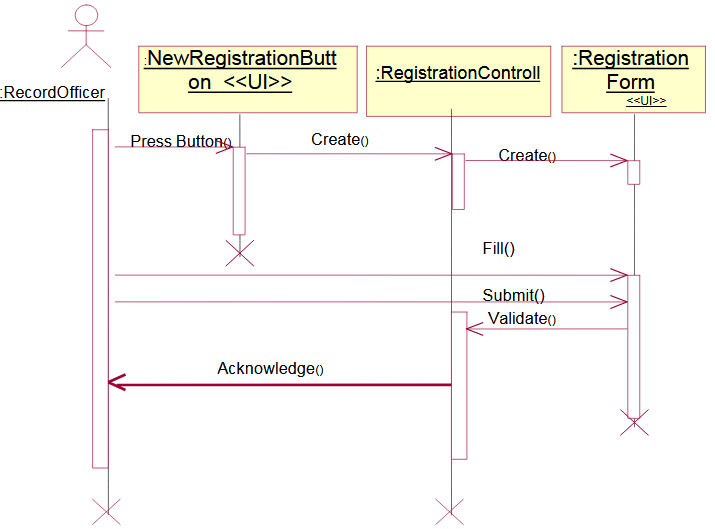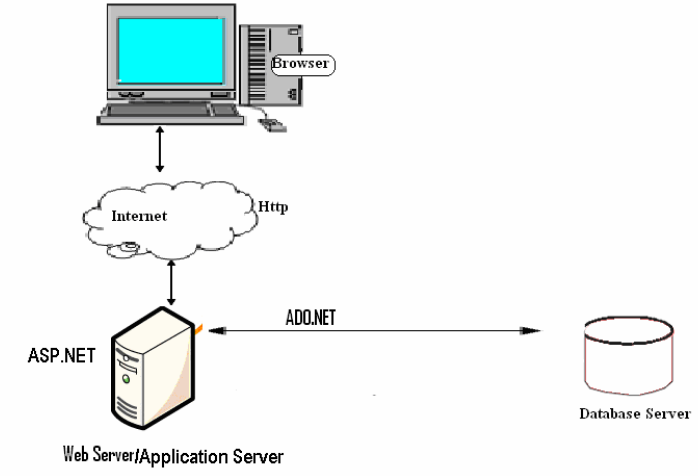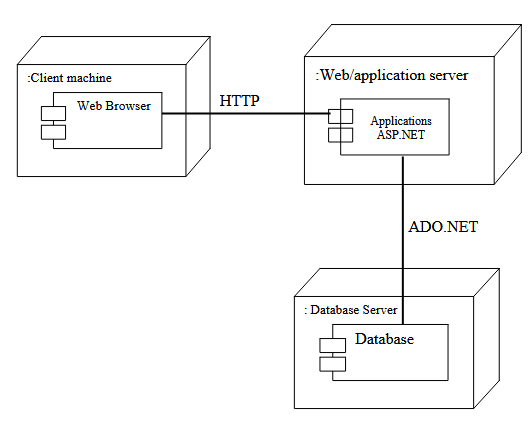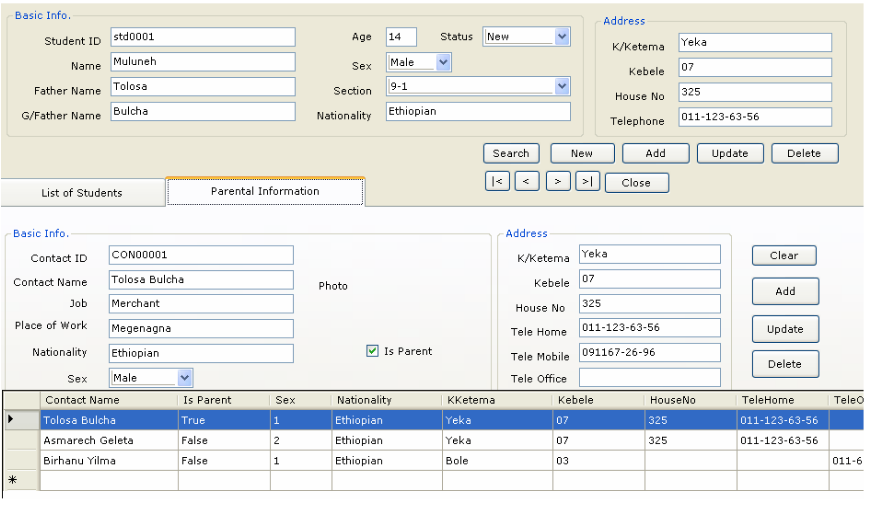ABSTRACT
This project work automates school management system. In the system two applications are developed, Windows based (thick client) and Web based (thin client). The windows application takes most of the activities such as offline student registering, transcript and report card generation and producing the timetable. The web application facilitates attendance recording by the homeroom teachers, to view status of students by their parents and to view reports by kebele and kifle-ketema education bureau officials.
Our solution of the timetable is very simple. In the high school considered for the project there are ten subjects for both grade nine and grade ten. Loads are assigned to each subject teacher and a code is given for each teacher-subject combination. A simple search technique has been used during allocation of each teacher-subject code to a time slot. A database has been used to enforce constraints and to store data.
The prototype has been tested with data from Kokebe Tsebah Secondary School. It has been observed that the system successfully registers students, facilitates attendance recording by the home room teachers and generates various reports such as report card, transcript and a feasible timetable satisfying the constraints (requirements). It has also been shown that the system facilitates to view the status of students by their parents using the Internet or Intranet of the school.
OVERVIEW OF THE SCHOOL MANAGEMENT SYSTEM

Figure 2.1 Concept of timetabling construction at schools
Figure 2.1 shows the concepts of timetable construction at schools. Lessons in a subject are taught by a teacher to a corresponding class of students and the timetabling problem is a problem of allocating resources, i.e. assigning to teachers and class of students, time slots and lessons. A time slot is a period and a lesson is an event associating a teacher, a subject and a class of students with in a time slot.
LITERATURE REVIEW
Automated SMS plays a great role in simplifying the job of employees at the school and satisfying the need of customers and stakeholders of the school. Even though no documentation is found in Ethiopia to be reviewed, products have been observed at some schools to help understand the problem of managing schools and handling school data. This chapter reviews these products.
- Observed Products
- Manual Timetabling
- Drawbacks of the Reviewed Systems
SYSTEM ANALYSIS

Figure 4.1 Use Case Diagram of the SMS
Use cases of the system are identified to be “Register Student”, “Record Attendance”, “Generate Transcript”, “Generate Report Card”, “View Report” and “Produce Timetable”. The diagram depicted in Figure 4.1 shows the use case diagram of the system.

Figure 4.2 Sequence Diagram for Student Registration
Sequence diagrams show the interaction between participating objects in a given use case. They are helpful to identify the missing objects that are not identified in the analysis object model. To see the interaction between objects, the following describe the sequence diagram of each identified use cases.
In Figure 4.2, once the user has activated the registeration module by interacting with the boundary object “New Registeration Button” button, the control object named “Registeration Control” manages the activities involved in “register Student” use case. First the “Registeration Control” creates registeration form which will be filled by the secretary and submitted. The registration control sends the record to a persistent storage.
SYSTEM DESIGN

Figure 5.1 Architecture of the System
The architecture used for the system is a 3 tier Client/Server Architecture where a client can use Internet browsers to access the online report provided by the system within the local area network of the school or any where using the Internet. Figure 5.1 shows the architecture of the proposed system.
The data tier maintains the applications data such as student data, teacher data, timetable data etc. It stores these data in a relational database management system (RDBMS). The middle tier (web/application server) implements the business logic, controller logic and presentation logic to control the interaction between the application’s clients and data. The controller logic processes client requests such as requests to view student’s result, to record attendance or to retrieve data from the database. Business rules enforced by the business logic dictate how clients can and cannot access application data and how applications process data.

Figure 5.2 Layered Representation of the System
Subsystem decompositions will help reduce the complexity of the system. The subsystems can be considered as packages holding related classes/objects. The SMS under consideration is decomposed into subsystems as shown in Figure 5.2. These subsystems are further decomposed into other subsystems. The major subsystems identified are “Student Registration”, “Login”, “Attendance”, “Report Card”, “Transcript”, “Timetable” and “Report” subsystems.

Fig 5.4 Deployment Diagram of the System
The system has two nodes such as the Web server and Clients. These nodes are shown as UML Deployment diagrams in Figure 5.4. The nodes can represent specific instances (workstations) or a class of computers (web server), which is a virtual machine. The applications of the system will run on the web server connected to the database server by ado.net.
IMPLEMENTATION
After the student has been registered, the system facilitates to register the student’s parent and emergency persons by providing another window as shown in figure 6.5. Note that parental and emergency person information is highly required by the school for handling the student in his/her stay at the school, for example in the case of ta king disciplinary measures for the case that the student has committed some crimes. So such information as the name, address of the parent or emergency person can be easily retrieved.
If the user has logged in as a principal to produce timetable then a form as shown in Figure 6.7 is displayed. When the user clicks on “Generate Timetable” button the scheduler selects a subject- teacher from the database, retrieves all the classes assigned to the teacher, calculates the load of the teacher which cannot be greater than the maximum load and selects one of the days randomly based on the number of lessons of the subject, searches a free appropriate time slot and assigns the slot to the lesson. The scheduler repeats the process until the load of the teacher becomes zero and all the teachers in the database are visited.
CONCLUSION
In this project, we developed an automated school management system that facilitates the various activities taking place at schools. The system developed in the project consists of windows and web applications. These are two different applications on the same database. The windows application takes most of the activities such as offline student registering, transcript and report card generation and producing the timetable. The web application facilitates attendance recording by the homeroom teachers and to view reports, to view status of students by students, teachers and parents.
Our solution of the timetabling problem is very simple. Data structures are used to implement the timetable designed. The scheduler selects a subject-teacher from the database, retrieves all the classes assigned to the teacher, calculates the load of the teacher which cannot be greater than the maximum load and selects one of the days randomly based on the number of lessons of the subject, searches a free appropriate time slot and assigns the slot to the lesson. The scheduler repeats the process until the load of the teacher becomes zero and all the teachers in the database are visited. Finally the result gene rated is stored in a database.
The prototype has been tested with data from Kokebe Tsebah Secondary School. It has been shown that the system effectively registers students along with parental information, easily retrieves information about a student and generates the required reports such as transcript, report card and timetable. In addition to generating a feasible master timetable it produces a timetable for each teacher. Further more it has been shown that the web application of the system helps attendance recording by the homeroom teacher and parents can view the status of their children using the Internet or Intranet of the school.
Source: Addis Ababa University
Author: Degif Teka
>> Innovative Student DBMS Project Ideas using SQL, MySQL for Engineering Students

